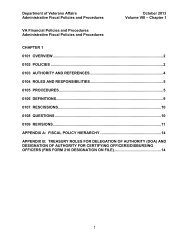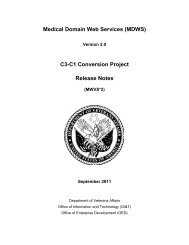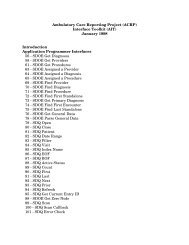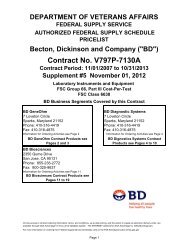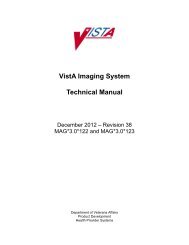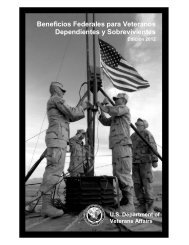Optimal Temperature for Cardioplegia During Coronary Artery ...
Optimal Temperature for Cardioplegia During Coronary Artery ...
Optimal Temperature for Cardioplegia During Coronary Artery ...
You also want an ePaper? Increase the reach of your titles
YUMPU automatically turns print PDFs into web optimized ePapers that Google loves.
OPTIMAL TEMPERATURE FOR CARDIOPLEGIA FINAL REPORT<br />
Reference Subjects/methods Statistically Significant Results/Conclusions<br />
Blood at different temperatures<br />
Franke, 2003 Total subjects: 200 consecutive elective CAGB<br />
patients randomized to<br />
• Intermittent antegrade cold (4°C) blood<br />
cardioplegia<br />
• Intermittent antegrade warm (33-34°C) blood<br />
cardioplegia<br />
• Randomization at time of anesthesia by<br />
drawing lots<br />
Bical, 2001 Total subjects: 30: first-time isolated CABG:<br />
• Warm (37°C) intermittent antegrade blood<br />
cardioplegia<br />
• Cold (4°C)<br />
• Intermittent antegrade delivery <strong>for</strong> both groups<br />
• Intramyocardial pH continuously monitored<br />
• Myocardial metabolism assessed be<strong>for</strong>e<br />
cross-clamping, one minute after clamp<br />
removal, and15 minutes after reperfusion<br />
Chocron, 2000 Total subjects: 135: first elective CABG:<br />
• Cold (8°C)<br />
• Lukewarm (20°C)<br />
• Warm (37°C)<br />
• Antegrade intermittent cardioplegia delivery <strong>for</strong><br />
all groups<br />
• Cardiac troponin I in serial venous blood<br />
samples used to compare ischemia among<br />
groups<br />
Exclusions<br />
• Aortic incompetence<br />
• Only one distal anastomosis required<br />
• Ejection fraction < .30%<br />
• Reoperation<br />
• Concomitant valve disease or unstable angina<br />
Randomization list prepared in advance,<br />
assignment by sealed envelope on patients’<br />
arrival in operating room<br />
• Preoperative and demographic data comparable between groups<br />
• Time on CPB and cross clamp time significantly shorter in warm group<br />
• Necessity <strong>for</strong> defibrillation after cardiac arrest significantly less frequent and of lower intensity in warm<br />
group;<br />
• No differences in hemodynamic stability or need <strong>for</strong> catecholamines between groups;<br />
• No differences in mortality, perioperative myocardial infarctions (MI), or need <strong>for</strong> intra-aortic balloon<br />
pump;<br />
• Cold group required significantly more frequent re-thoracotomny due to bleeding within early postoperative<br />
course;<br />
• Post-operative ischemia markers significantly lower in warm group.<br />
Conclusions:<br />
• Intermittent antegrade warm blood cardioplegia is a safe and cost-effective method in elective<br />
on-pump CABG.<br />
• Significantly lower incidence of ventricular arrhythmias and lower ischemic markers suggest<br />
improved myocardial protection compared to cold blood cardioplegia in these patients.<br />
• Clinical outcomes and hemodynamic parameters identical <strong>for</strong> both groups: no deaths or perioperative<br />
MI;<br />
• Group differences: Metabolism at 1 minute post clamp removal: higher coronary sinus release of lactate<br />
in warm group, also lower intra-myocardial pH; and at day1: lower release of troponin I in arm group;<br />
• No differences between groups in creatine kinase after reperfusion or during post-operative period;<br />
Conclusion:<br />
Warm intermittent antegrade blood cardioplegia provides equally effective post-ischemic<br />
functional recovery and better metabolic recovery than does cold intermittent antegrade blood<br />
cardioplegia.<br />
Randomization produced equivalent groups <strong>for</strong> age, sex, ejection fraction, body surface area, number of<br />
distal anastomoses per patient, cross-clamp time, CPB duration<br />
2 patients (1.5%) died within 30 days, both from lukewarm group:<br />
• perioperative MI at hour 4<br />
• postoperative stroke on day 28<br />
Cardiac troponin I concentrations:<br />
• Higher in cold group than in intermediate or warm groups at hours 6,9, 12<br />
• Higher in lukewarm group at hour 6 than in warm group<br />
• Total release higher in cold group than in intermediate or warm groups<br />
Conclusions:<br />
• Intermediate antegrade lukewarm blood cardioplegia is appropriate and clinically safe<br />
• Cardiac troponin I release suggests that lukewarm cardioplegia is better than cold cardioplegia<br />
but less effective than warm cardioplegia in low risk patients, leading authors to recommend<br />
warm cardioplegia in low risk patients<br />
VA OPCS Technology Assessment Program http://www.va.gov/vatap 12






